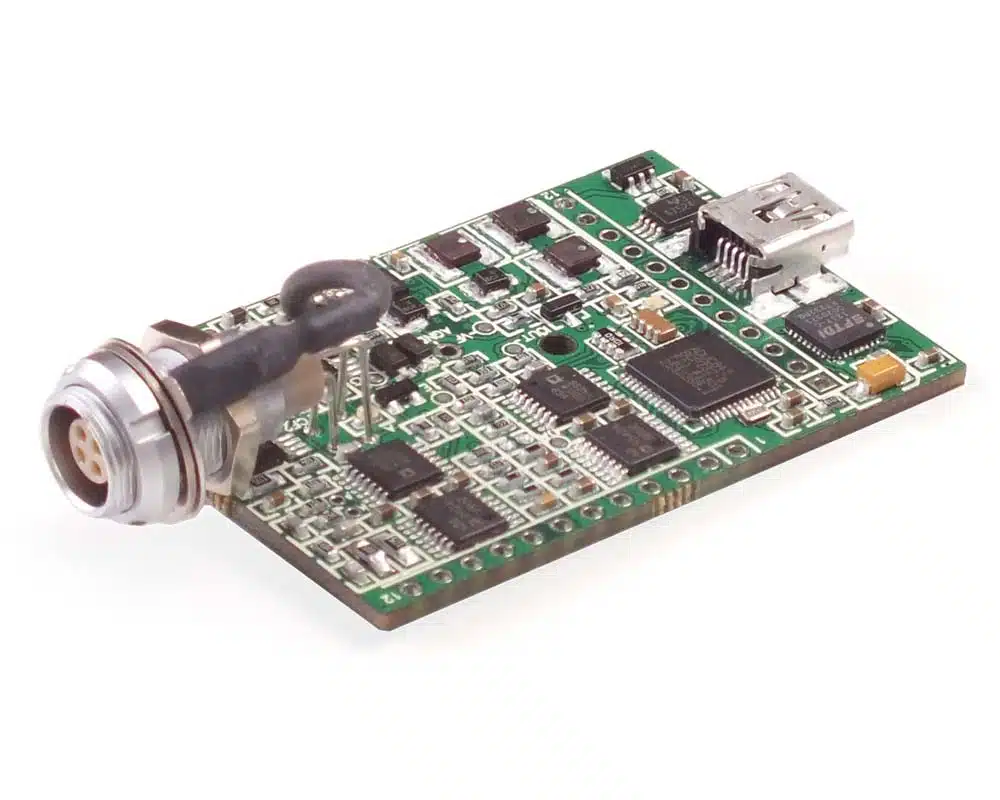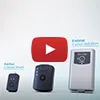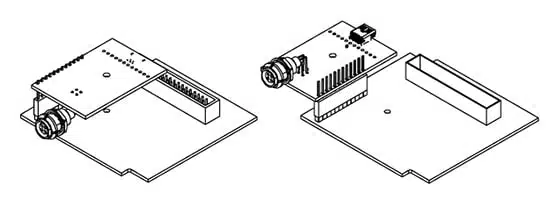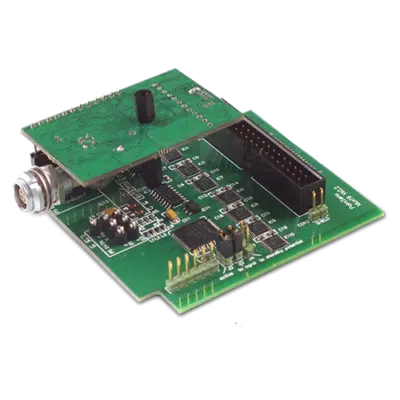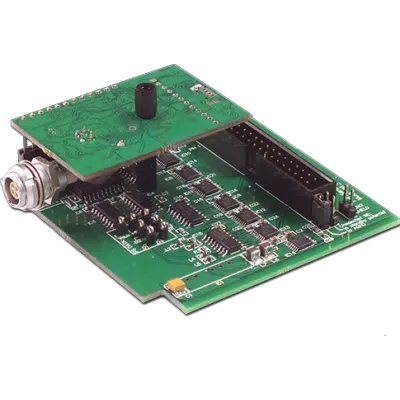EmStat3 Module
Research grade single-channel potentiostat module
- Small tested & calibrated potentiostat module
- Compliance voltage ±5 V
- Maximum current ±20 mA
- Development SDK available
Description
The EmStat3 is a research-grade potentiostat that was initially developed for OEM purposes. The EmStat3 is a reliable and versatile potentiostat that found its way to the market in many different forms.
The EmStat3 module is successfully integrated into devices for specific applications, but also in our own product range that we sell for generic research purposes such as the EmStat Blue, EmStat Go, and MultiEmStat. The main difference between the EmStat3 and EmStat3+ is the extra current range of 100 mA for the EmStat3+ module.
Techniques
Voltammetric techniques
Pulsed techniques
Amperometric techniques
Potentiometric techniques
Impedimetric techniques
Other
Specifications
The EmStat3 module features:
- 9 embedded common electrochemical techniques
- options for manual cell control (potentials, changing current range and timing)
- USB and serial communication or USB as Virtual COM port
- automatic current ranging
- digital I/O for peripheral control (stirrer or valve)
- analog input for measuring auxiliary input like temperature
- analog output for controlling peripherals like a stirrer
- multiplexer control
| General | |
|---|---|
dc-potential range
The maximum potential difference, that can be applied between WE and RE.
|
± 3.000 V |
compliance voltage
The compliance voltage is the maximum voltage that can be applied between the working and counter electrode. Another name could be the maximum cell potential. Continue reading
|
± 5 V |
| dc-potential resolution | 0.1 mV |
| dc-potential accuracy | 0.2 % |
current ranges
A current range defines the maximum current a potentiostat can measure in a certain range. Continue reading
|
1 nA to 10 mA (8 ranges) |
| maximum current | ± 20 mA typical and ± 15 mA minimum |
The current is measured using a zero resistance ammeter (ZRA).
| More specifications | |
|---|---|
| current resolution | 0.1% of current range, 1 pA at lowest current range |
current accuracy (deviation)
The current accuracy describes how close to the real values your measured current is. Continue reading
|
≤ 1 %of current range at 1 nA ≤ 0.5 % at 10 nA ≤ 0.2 % at 100 nA to 100 uA ≤ 0.5 % at 1 mA, 10 mA all with max. 0.2 % offset error |
electrometer amplifier input
The amplifier input resistance of the amplifier in the electrometer determines the load that the amplifier places on the source of the signal being fed into it. Ideally the resistance is infinite, and the load to be zero to not to influence your measurement.
|
> 100 Gohm // 4 pF |
| rise time | approx. 100 μs |
| power | ES3: 5V, max. 130 mA ES3+: 5V, max. 500 mA |
| external I/O options | analog: 1 input and 1 output both 0 V- 4.096 V digital: 4 in/output lines max. rating: -0.3 V to 5.3 V |
| PCB dimensions | ES3: 51.5 x 34 mm ES3+: 55 x 41 mm |
Software Development
Develop software for PC, smartphone or microcontroller
Whether you want to write a simple or advanced Windows application, develop an Android or iPhone app or integrate the EmStat in your own hardware, you can do it with our Software Development Tools and code examples.
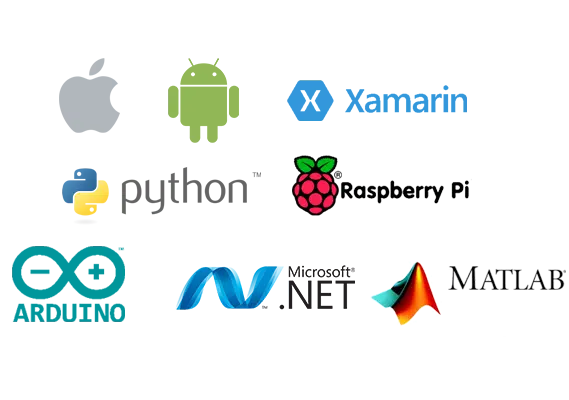
Software Development Kits for .NET
The PalmSens Software Development Kits (SDKs) for .NET can be used with any of our instruments or OEM potentiostat modules to develop your own software. The SDK’s come with a set of examples that shows how to use the libraries.
PalmSens SDKs with examples are available for the following .NET Frameworks:
- WinForms
- WPF
- Xamarin (for Android)
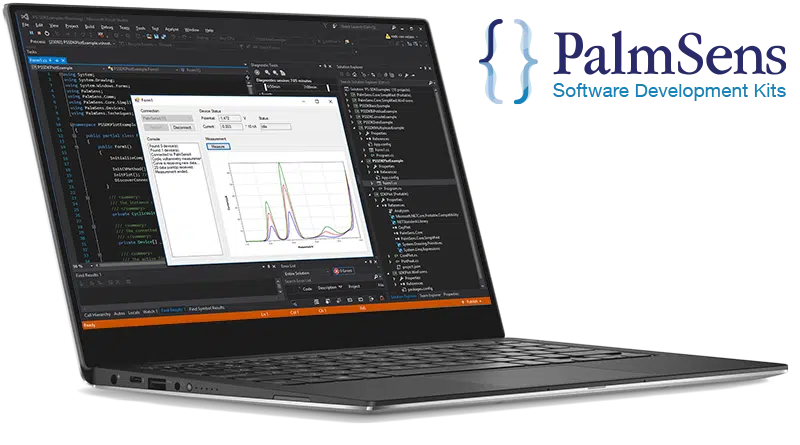
Extensions
The MUX8 multiplexer is meant for use with 2- or 3- electrode sensors or cells up to 8 channels. The MUX8 module allows to switch:
- 8x WE, 8x RE, 8x CE
- 8x WE, 8x RE+CE joint together
- 8x WE with fixed RE and CE
The MUX8 can be mounted directly to the EmStat3 potentiostat module as shown below. Or it can be connected via short wires or flat cable.
Development
The MUX8 module can be mounted directly on the EmStat Development board. Connections to different cells can be made using the screw terminals on the development board. The available libraries for software development are also made compatible with the MUX8 module.
IMPORTANT REMARK
It is not possible to apply a potential simultaneously to more than one sensor or cell each with three electrodes. This requires a multi-channel potentiostat, having one potentiostat for each channel. Virtual simultaneous measurements (by means of fast switching, but maintaining potentials) using a multiplexer are possible with two electrode sensors or cells, so when combined counter and reference electrodes are applied.
You may also like…
Downloads
Software (6)
| Name | Last updated | |
|---|---|---|
| PSTrace PC software for all single channel instruments PSTrace software is shipped as standard with all single channel and multiplexed instruments. The software provides support for all techniques and device functionalities. | 08-07-24 | |
| PalmSens SDK for Python PalmSens Python SDK 5.12 with support for instruments from PalmSens BV on Windows systems. | 07-11-22 | |
| Getting started with PalmSens SDK for WPF This manual explains how to use the SDK with the included libraries and examples. | 07-06-21 | |
| Getting started with PalmSens SDK for WinForms This manual explains how to use the SDK with the included libraries and examples. | 07-06-21 | |
| Getting started with PalmSens SDK for Android This manual explains how to use the SDK with the included libraries and examples. | 07-06-21 | |
| Embedded SDK for EmStat3 An example project of how to use the SDK is provided for Arduino. It's made in "Arduino Software (IDE)" found at "www.arduino.cc". For more information about the example, read the comments in "EmStatSDKExample.ino". A short explanation with an example of how to use the SDK in any c/c++ environment can be found in PSComm.h. The Arduino example should also be easy to port to C or C++, if required. For more advanced use beyond the scope of the SDK, refer to the "EmStat communication protocol##.pdf". | 09-04-20 |
Application Note (2)
| Name | Last updated | |
|---|---|---|
| Migrating to the EmStat4M LR or HR This Application note shows the differences between our older and latest EmStat modules which are relevant when switching your software and electronics design to work with the EmStat4 LR or HR. | 06-10-22 | |
| Wireless communication module for EmStat3 OEM Describes how to use the Wireless communication module for EmStat3 OEM | 09-04-20 |
Documentation (4)
| Name | Last updated | |
|---|---|---|
| EmStat3 communications protocol The EmStat3 and EmStat3+ communications protocol for OEM for firmware v7.6 | 28-09-20 | |
| EmStat3 module dimensions Drawing with dimensions of EmStat3 PCB (PDF) | 11-08-20 | |
| EmStat3 module Brochure EmStat3 module Brochure | 09-04-20 | |
| EmStat3 series Brochure | 08-04-20 |
Other (1)
| Name | Last updated | |
|---|---|---|
| EmStat3 3D Model A STEP file of the EmStat3 model | 11-08-20 |



















